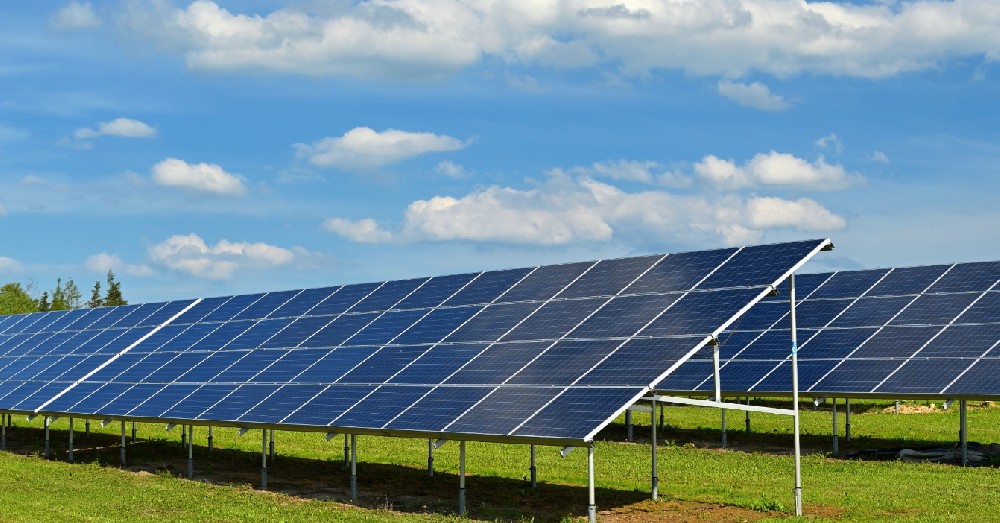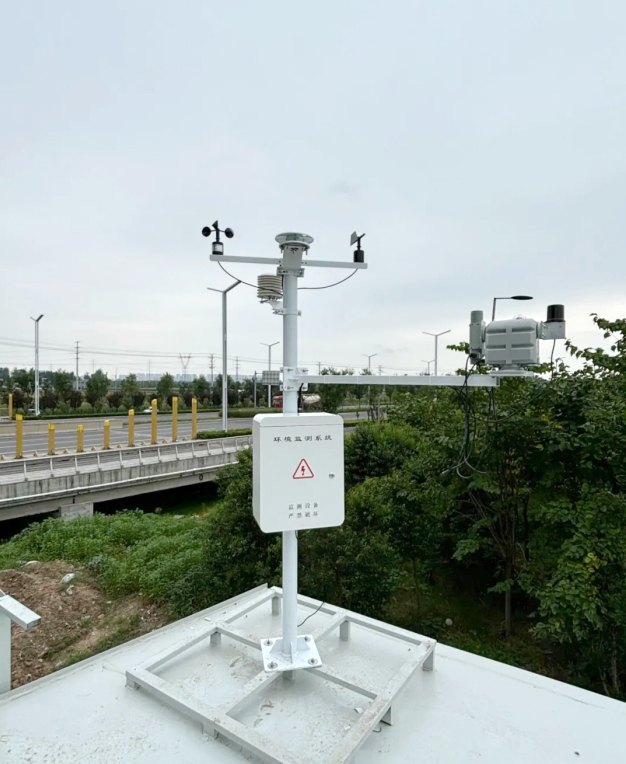

— Blogs —
—Products—
 Consumer hotline +8618073152920
Consumer hotline +8618073152920 WhatsApp:+8615367865107
Address:Room 102, District D, Houhu Industrial Park, Yuelu District, Changsha City, Hunan Province, China
Product knowledge
Time:2025-04-01 16:22:16 Popularity:62
As the global energy structure shifts towards renewable energy, photovoltaic (PV) power generation has become a key pillar in achieving carbon neutrality. The efficiency and long-term stability of photovoltaic power plants are directly impacted by the surrounding environment, and photovoltaic weather stations, as an integrated high-precision monitoring and data analysis system, are gradually becoming an indispensable tool in the photovoltaic industry. This article will provide a detailed introduction to the functions, structure, hardware and software advantages, as well as the practical value of photovoltaic weather stations, helping readers to fully understand how this technology contributes to optimizing and developing photovoltaic power plants.

A photovoltaic weather station is an environmental monitoring system specifically designed for photovoltaic power plants. It integrates high-precision sensors and advanced data acquisition technology to monitor key weather data around the power plant in real-time. These data include total solar radiation, direct radiation, diffuse radiation, ambient temperature, module temperature, wind speed, wind direction, humidity, atmospheric pressure, etc., providing scientific decision-making support for the operation and maintenance (O&M) team.
By analyzing these data, the O&M team can quickly identify potential issues, such as the decline in module efficiency due to high temperatures or safety risks caused by strong winds, and take targeted measures to ensure stable operation and improve energy generation efficiency. Moreover, the application of photovoltaic weather stations helps plant managers optimize maintenance strategies, such as adjusting the cleaning cycle based on radiation intensity, improving cooling design based on temperature data, or optimizing the plant layout according to wind speed and direction. These actions not only enhance economic benefits but also extend the lifespan of equipment and reduce long-term operational costs.
Photovoltaic weather stations are not just a supplement to photovoltaic technology but also a key driving force behind industry innovation and industrial upgrades. They play a crucial role in both the early construction and the operational phases of a power plant.
The value of a photovoltaic weather station lies in its ability to support multiple application scenarios. Below are its specific roles at different stages:
In the planning phase of a photovoltaic power plant, installing a photovoltaic weather station can collect key environmental data to support site selection, design, and performance evaluation. For example, by continuously monitoring solar radiation and wind speed, developers can determine the best installation angle and layout plan to ensure that the power plant receives maximum solar energy.
After the plant is built, the photovoltaic weather station can establish predictive models based on historical data to guide the O&M team in adjusting the orientation and tilt of the solar panels to adapt to seasonal changes in sunlight. Real-time monitoring also helps identify abnormal situations, such as overheating components or excessive dust accumulation, allowing for timely cooling or cleaning actions to enhance energy conversion efficiency.

A photovoltaic weather station adopts a modular design, allowing users to flexibly combine its core components according to needs. The main components are as follows:
- Fully Automatic Solar Radiation Transmitter: Tracks the sun continuously to ensure accurate radiation data.
- Solar Radiation Sensors: Including total radiation, tilted radiation, and direct radiation sensors to monitor different types of solar radiation.
- Meteorological Sensors: Covering wind speed, wind direction, temperature, humidity, atmospheric pressure, and other parameters.
- Module Temperature Sensors: Monitors the temperature of photovoltaic modules in real-time to assess operational status.
- Data Acquisition Host: Integrates data processing and transmission functions.
- High-Strength Carbon Steel Support Frame: Provides stable support and adapts to various environments.
- Electrical Control Box and Power Supply System: Supports solar or external power supply, ensuring continuous operation of the equipment.
Depending on the application scenario, users can select different models. For example, the grid-connected fully automatic solar tracking photovoltaic weather station is suitable for large-scale grid-connected power plants, while distributed photovoltaic weather stations are more suitable for small distributed systems, such as building-integrated photovoltaic projects.
The hardware design of photovoltaic weather stations takes into account the need for multi-parameter monitoring and long-term stability. The main highlights are as follows:
Solar radiation is the core factor influencing photovoltaic power generation. The photovoltaic weather station can collect data on total radiation, direct radiation, diffuse radiation, sunshine duration, and cumulative radiation, helping users calculate the optimal tilt angle and optimize the photovoltaic array layout. It can also monitor wind speed and direction (affecting heat dissipation and stability), atmospheric pressure (evaluating radiation penetration), temperature (to prevent efficiency loss), and humidity (reducing corrosion risks), providing comprehensive support for operation and maintenance.
A photovoltaic weather station equipped with a fully automatic tracking device can follow the sun’s movement around the clock, providing high-precision radiation data without manual intervention, significantly improving measurement efficiency.
The device supports two power supply modes: external AC power and solar power systems. The solar power system is suitable for off-grid environments, ensuring continuous operation even in remote areas.
The dual-pole structure enhances the stability and load-bearing capacity of the equipment, with strict testing to ensure no obstruction between sensors. The support frame is made of high-quality materials, and the internal wiring design prevents cable exposure. The maintenance hatch at the bottom facilitates maintenance, ensuring durability even in extreme weather conditions.

In addition to robust hardware, the software system of the photovoltaic weather station also provides users with an efficient experience. Through an environmental monitoring cloud platform, users can manage data and perform intelligent operation and maintenance:
Data is uploaded to the cloud platform via 4G or Ethernet, allowing users to check the latest monitoring results anytime via mobile phones or computers for 24/7 remote supervision.
The platform supports data storage, allowing users to view historical trends in table or curve form and export data for strategy optimization.
When monitoring values exceed safe limits, the platform will promptly alert users through interface prompts (data turning red, pop-ups, sounds) and remote notifications (phone calls, SMS, emails, WeChat), and alarm information will be recorded.
The cloud platform can integrate on-site cameras to provide video footage and snapshots. The technology-rich large screen interface automatically displays all device data, improving management efficiency.

Photovoltaic weather stations have a wide range of applications, including:
- Solar Energy Resource Evaluation: Providing data support for site selection and investment return analysis.
- System Performance Monitoring: Evaluating the operational status of photovoltaic modules and optimizing energy generation efficiency.
- Scientific Research: Used in atmospheric energy balance, thermal stress research, and climate change analysis.
- Satellite Data Calibration: Verifying the accuracy of satellite-derived radiation data.
- Revenue Forecasting: Supporting economic efficiency evaluation of power plants through solar resource prediction.

Through precise monitoring and intelligent analysis, photovoltaic weather stations not only enhance the operational efficiency and economic benefits of photovoltaic power plants but also contribute to the sustainable development of renewable energy. With technological advances, photovoltaic weather stations will continue to optimize, integrating more advanced sensors or AI predictive models, further driving the green transformation of the photovoltaic industry.
For overseas customers looking to improve plant performance and reduce operation and maintenance costs, photovoltaic weather stations are undoubtedly a worthwhile investment solution. By transforming environmental data into actionable insights, they safeguard the long-term success of photovoltaic power plants.
NBL-W-SRS-Solar-radiation-sensor-instruction-manual-V4.0.pdf
NBL-W-HPRS-Solar-Radiation-Sensor-Instruction-Manual-V3.0.pdf
Prev:Automatic weather stations: applications in parks and Tourist Attractions
Next:What is a photovoltaic weather station? Core Functions of a PV Weather Station
Related recommendations
Sensors & Weather Stations Catalog
Agriculture Sensors and Weather Stations Catalog-NiuBoL.pdf
Weather Stations Catalog-NiuBoL.pdf
Related products
 Combined air temperature and relative humidity sensor
Combined air temperature and relative humidity sensor Soil Moisture Temperature sensor for irrigation
Soil Moisture Temperature sensor for irrigation Soil pH sensor RS485 soil Testing instrument soil ph meter for agriculture
Soil pH sensor RS485 soil Testing instrument soil ph meter for agriculture Wind Speed sensor Output Modbus/RS485/Analog/0-5V/4-20mA
Wind Speed sensor Output Modbus/RS485/Analog/0-5V/4-20mA Tipping bucket rain gauge for weather monitoring auto rainfall sensor RS485/Outdoor/stainless steel
Tipping bucket rain gauge for weather monitoring auto rainfall sensor RS485/Outdoor/stainless steel Pyranometer Solar Radiation Sensor 4-20mA/RS485
Pyranometer Solar Radiation Sensor 4-20mA/RS485
Screenshot, WhatsApp to identify the QR code
WhatsApp number:+8615367865107
(Click on WhatsApp to copy and add friends)